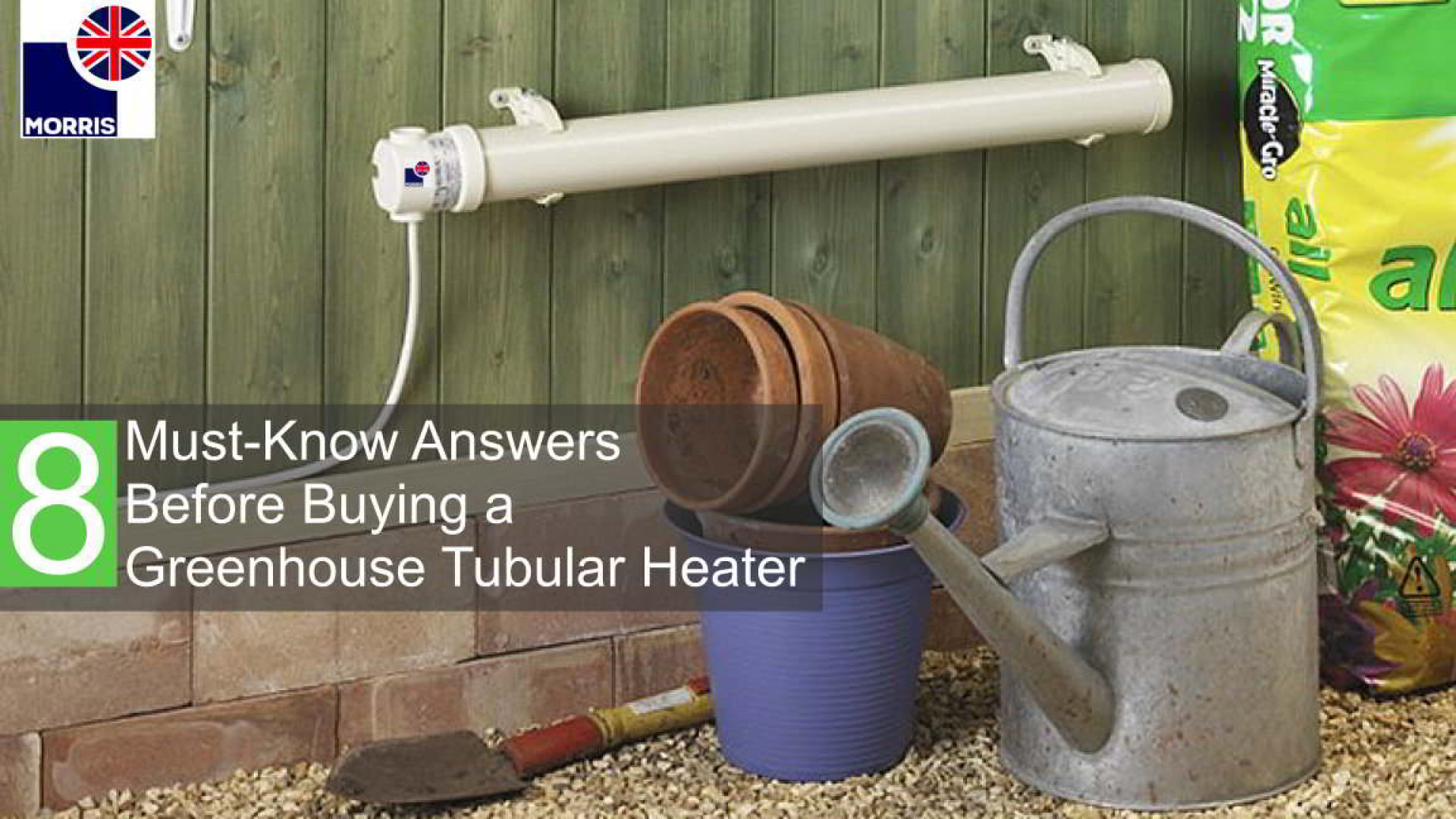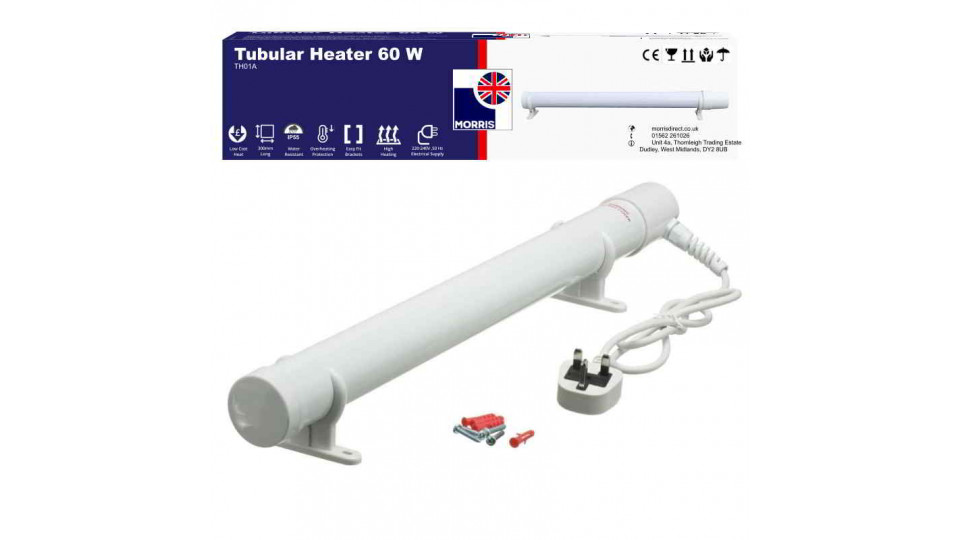A greenhouse tubular heater is a must-have if you want to protect all the gardening you did in Autumn. Tubular greenhouse heaters come in different sizes, and the model you choose determines whether it will effectively and inexpensively heat your greenhouse.
A greenhouse is a structure that allows you to grow all sorts of plants year-round. However, greenhouses, too, get affected by weather changes that can alter the conducive environment inside the structure, especially temperature. Installing a greenhouse tubular heater can help solve the problem of temperature fluctuations, but you have to buy the right heater for the job.
To ensure you get your money’s worth, here are 8 questions to answer as you shop for tubular greenhouse heaters.
1) Which greenhouse heater is best?
There are various ways to heat a greenhouse to keep your crops alive all year. The common ones include;
● Fan heaters
● Hydro heaters
● Tubular heaters
Fan heaters
Fan heaters are called hot air heaters as well. As the name suggests, this type of heater uses a fan to blow hot air into any environment. The heater has a coil that gets heated, generating hot air that the fan blows into the room for ample heating.
Hydro heaters
Hydro heaters, also known as boiler heaters, warm up any room using a piping system that passes hot water. The water heats in a boiler and passes through metal pipes. Heat in the water radiates through the installed pipes, warming up your summer house.
Tubular heaters
Tubular heaters are more modern and functional in any space. They consist of a cylindrical heater mounted on a surface with a cord that connects to the power outlet. The tubular surface generates heat which radiates throughout a room.
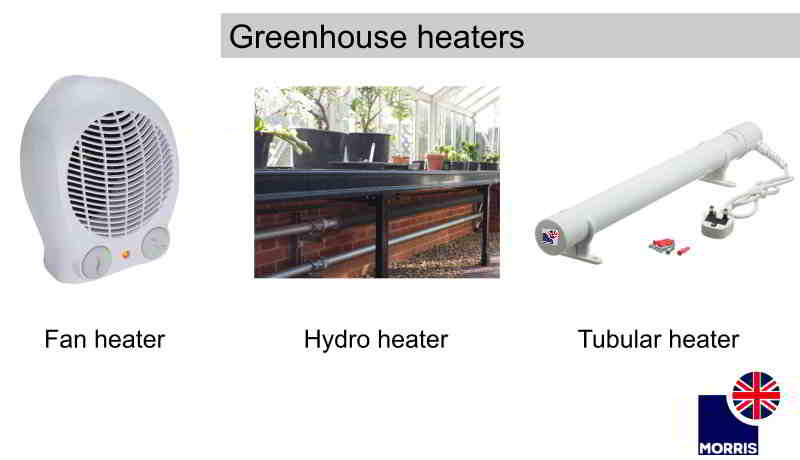
2) Are tubular heaters any good for greenhouse?
Greenhouses provide an optimal environment for plants to thrive. The three main components maintaining this conducive environment are light, temperature and humidity. A well-insulated greenhouse protects your plants or seeds from weather elements, ensuring they stay warm.
Yet, the fluctuating temperature inside the greenhouse can be detrimental to your plant, especially during the cold months. Any greenhouse requires a reliable heating solution to ensure plants thrive year-round. Also, the heating solution chosen should be effective enough in minimizing humidity in the greenhouse - preventing moisture damage to plants, walls, tools, and any structure in the greenhouse.
There is so much to gain from installing tubular heaters in your greenhouse.
Advantages of tubular greenhouse heaters
Tubular heaters are cost-effective compared to conventional heaters like hydronic heaters and fan heaters. While boiler heaters require plenty of water, expensive piping and boiler installation, tubular heaters require very few components to get them running. They also surpass fan heaters for being more energy efficient.
Easy to install
It will cost a lot of money to install a hydro heater compared to a tubular heater. Tubular heaters for greenhouses only require mounting brackets to install the unit anywhere you want. Not only can you use it in a greenhouse, but you can also install the heater in your garage, basement, attic, or living room.
Minimalistic design
A tubular heater has a compact design that is ideal for both small and large greenhouses. While fan heaters can be bulky and boiler heaters run unsightly pipes through your shed, a tubular heater is small enough to be tucked away and still provides ample heating. You can install one under shelves, in corners, or next to your tools in a greenhouse.
Uses less power
A fan heater requires enough power to heat the coil inside and to spin the fan as well. In an hour, this type of fan will use between 1000 w and 2000 watts of power. A tubular heater, on the other hand, only uses between 60 watts and 240 watts of power in an hour to provide heating.
Built quality
Also, tubular heaters have superior built quality. Modern tubular heaters are built from tough materials to withstand wear and tear. In addition, a high-quality electric tubular greenhouse heater will have a typical IP score of 55, which means it is highly resistant to water, dust, and other outside elements. It is the ideal heater to use in a humid greenhouse without risking damage to the unit.
Safe to use in a greenhouse
A greenhouse tubular heater is a safer choice compared to conventional heating solutions. It comes with a greenhouse tubular heater temp regulator that prevents the appliance from overheating. The inbuilt thermal cut will always cut power to the unit to prevent overheating, meaning you and your family are safe when using the heater.

Low maintenance
Tubular greenhouse heaters are low maintenance compared to hydro and fan heaters. A hydro heater is the most expensive to maintain should the boiler become faulty over time. Also, leaks can develop in the piping system, which may need patching or replacing.
Fan heaters are prone to gathering dust, which needs cleaning for the appliance to work effectively.
3) What type of heater is best for a greenhouse?
There are a couple of things to consider when determining the best heater for a greenhouse;
● The size of the heater
● Cost of running the heater
● Construction material
● Heater position
4) What size tubular heater do I need for a greenhouse?
Tubular greenhouse heaters come in various sizes to suit different needs. If you are not sure what heater size is best for your greenhouse, here is how you can determine that.
An accurate way to determine greenhouse tubular heater size is by considering;
● Size of the Greenhouse
● Optimal internal temperature
The size of the greenhouse here refers to the total surface area that requires heating. The optimal internal temperature is the ideal greenhouse temperature for plant growth and survival.
Standard electric tubular greenhouse heater sizes include;
● 1 ft or 30 cm 60-watt heater
● 2 ft or 60 cm 120-watt heater
● 3 ft or 90 cm 180-watt heater
● 4 ft or 120 cm 240-watt heater
Small greenhouses will benefit from the 1ft tubular heater or 2 ft tubular heater. If your summer house has adequate warmth, you can still install these small heaters near your tools or under cabinets to keep tools dry and prevent the growth of mould on shelves and cupboards.
If you want to heat a larger greenhouse, a 3 ft tubular heater provides ample heating at a fraction of the cost of using conventional heating methods.
5) How much does it cost to run a tubular greenhouse heater?
According to the current standard electricity tariff UK (1 October to 31 December 2023), the average cost for electricity is 27p per kWh consumed.
A 1ft tubular heater consumes 60 watts of power in an hour. When converted, that's 0.06 kWh, meaning your energy bill is 1.6 pence per hour. You can leave the electric tubular greenhouse heater running for 24 hours, and it will only cost you 38 pence of power consumed.
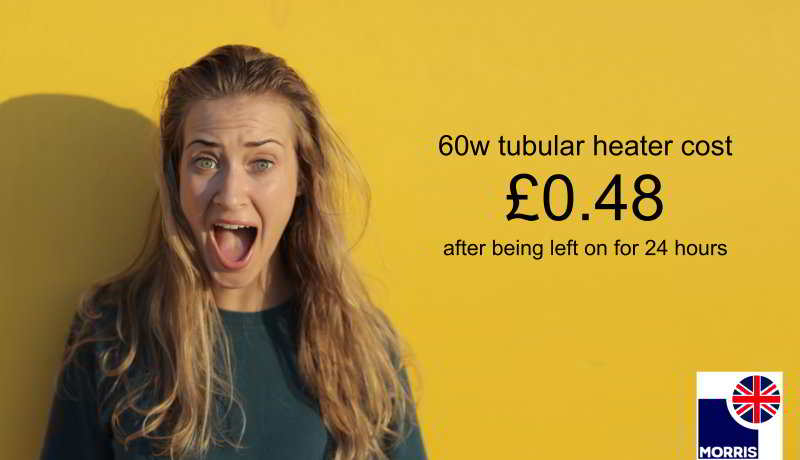
A boiler heater consumes, on average, 24kW per hour. It will cost you 648 pence (27p/kWh x 24) or £6.48 to run the hydro heater in an hour, translating to £155 in 24 hours. A fan heater uses between 1000w and 2400w of power in an hour, translating to 27p to 64p in hourly charges.
It is cheaper to run a greenhouse tubular heater all day compared to conventional heating solutions. In some cases, you have to regulate the temperature and humidity in your greenhouse. The cost of operating a dehumidifier with a tubular heater is far cheaper than a fan or hydro heater.
More tips for reducing greenhouse tubular heater costs
● Insulate your greenhouse against heat loss. Fix any crevices on the greenhouse walls that may be causing heat to escape or allowing moisture into the greenhouse.
● Close doses and windows when using the heater. A tube heater warms up faster in enclosed spaces, saving on electricity.
● Take advantage of sunlight. The UK still gets pockets of sunshine during the winter months. Turn off the heater when it shines to allow your greenhouse to warm up naturally.
● Switch off your fan vents. Fan vents suck out bad air from your greenhouse, but they will also remove hot air, making the room cooler. This can cause the heater to work twice as hard to maintain optimal internal temperature.
● Choose the right size heater for your greenhouse. No need to install a 180-watt heater where a 60-watt heater will suffice.
6) Can you leave a tubular heater on all the time?
The answer is Yes. A greenhouse tubular heater runs on less power compared to conventional heaters. Even with a 4 ft tubular heater installed and running full-time, you still enjoy huge savings on energy bills every month. Pay attention to the tips we mentioned above to ensure that your tubular greenhouse heater does not use a lot of power to keep your summer shed warm.
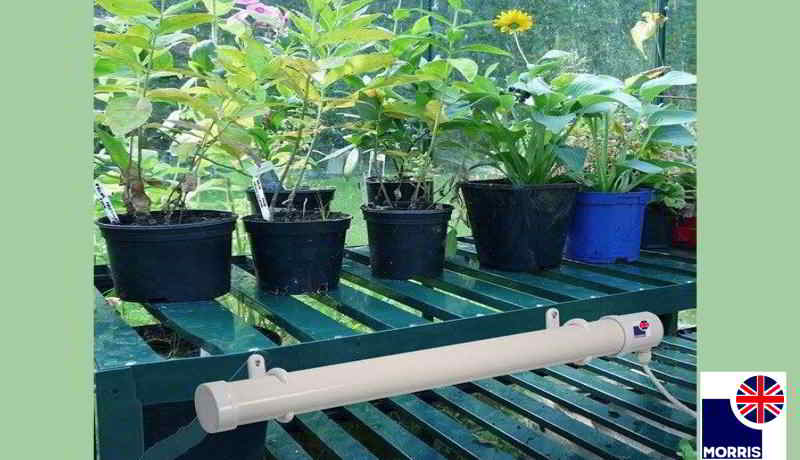
7) What is the best material for tubular heaters?
Tubular heaters are made from durable metals that can withstand corrosion and increasing temperatures. The standard materials used for making the sheath of a tubular heater are copper, titanium, and steel (especially 304 steel).
Also, tubular heaters should have an ingress protection or IP score of at least 55. An IP55 rating confirms that the tubular heater has a sheath material that is water and dust-resistant.
8) What is the best position for a greenhouse tubular heater?
You can install tubular greenhouse heaters on the floor or walls. The best way to install a tubular heater is to mount it horizontally for uniform heat dissipation. When wall mounting, ensure the heater has a floor clearance of about 25 mm to ensure it works correctly. Also, install the mounting brackets slightly inwards from the ends of the tubular heater for the best fit.
Install the heater in an area with ample air circulation. Never install the tube heater close to flammable material or in tight spaces that can cause overheating. In addition, consider installing the heater closer to a power source for easy cable management.
Conclusion
A greenhouse tubular heater is a worthy investment for your summerhouse. It helps maintain optimal greenhouse temperatures and keeps humidity at bay. When buying a tubular heater, ensure it is the right size for your greenhouse, which will help you save on running costs. Tubular heaters have low power consumption, which allows you to maintain an optimal temperature in your greenhouse year-round without breaking the bank.


